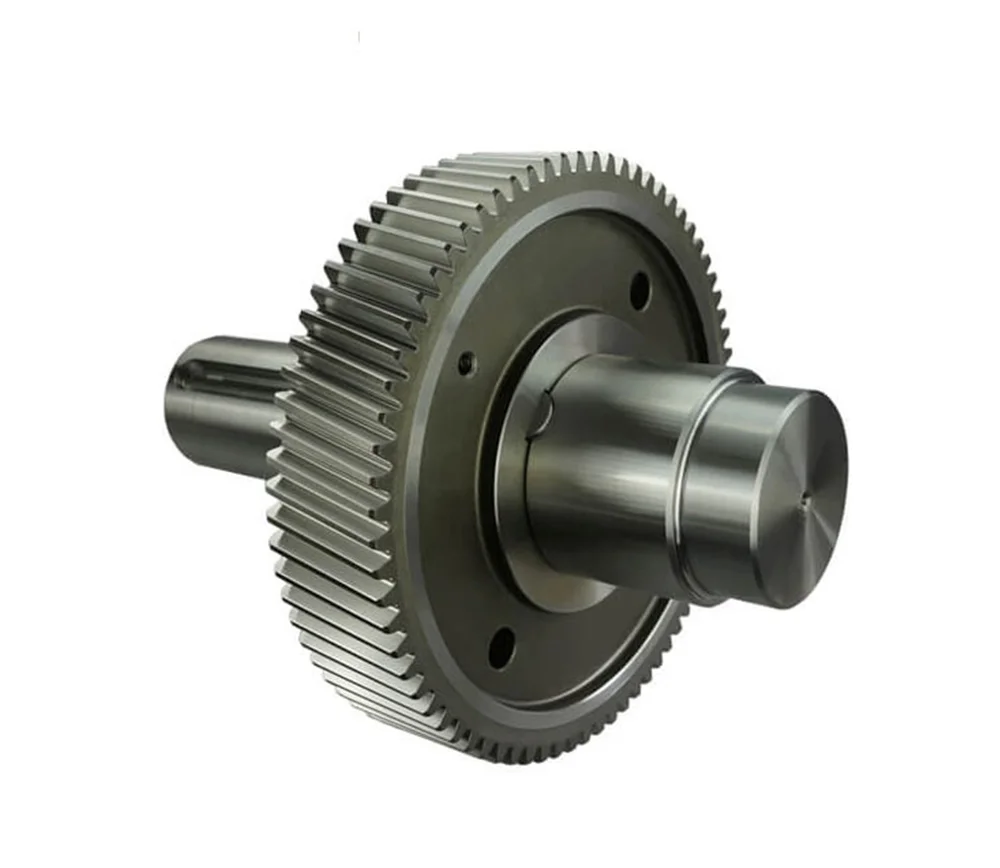The modern automobile is a complex and highly integrated system of mechanical, electrical, and electronic components. At the heart of many of these systems lies an often-overlooked but critically important element: the gear. Gears are the fundamental building blocks that transmit power, convert torque, adjust rotational speeds, and ensure synchronized motion across various vehicle subsystems. In this blog post, as a high quality wear-resistant gear manufacturing factory, Longruifa will share the application of durable precision industrial gear in automobiles.
Role of Precision Industrial Gears in Automotive Systems
Gears serve as mechanical levers that modify the force and speed of a power source. In vehicles, gears perform the essential role of translating engine power into usable motion. They are found in key systems such as:
* Transmissions (Manual and Automatic)
* Differentials
* Steering Systems
* Oil and Water Pumps
* Turbochargers and Superchargers
* Timing Mechanisms
* Electric Drive Units (in EVs)
Each of these applications requires gears with specific load-bearing capabilities, tolerances, materials, and life expectancy. The use of durable precision industrial gears ensures optimal performance, especially under high-load, high-temperature, and continuous-duty conditions.

Precision Gear Engineering: Key Concepts
1. Tolerance and Surface Finish:
Precision gears are manufactured to extremely tight tolerances—often within a few microns—to ensure minimal backlash and maximum contact fidelity between gear teeth. Surface roughness is also minimized through finishing processes such as grinding, honing, and superfinishing, which are critical for reducing friction, noise, and wear.
2. Tooth Geometry and Profile:
Involute profiles are standard for automotive gears due to their smooth transmission characteristics and tolerance to slight misalignments. Modifications such as profile shifting, crowning, and tip relief are employed to improve load distribution, reduce stress concentrations, and extend gear life.
3. Material Selection and Heat Treatment:
Automotive gears are typically made from high-grade alloy steels (e.g., 8620, 9310, or case-hardened steels) that offer a combination of core toughness and surface hardness. Heat treatments like carburizing, nitriding, and induction hardening are used to enhance surface wear resistance while preserving core ductility.
4. Lubrication and Thermal Management:
The correct lubricant selection (viscosity, additive chemistry) is critical for minimizing wear and preventing thermal degradation. Advanced gearboxes employ active cooling systems and synthetic lubricants to manage heat generated from high-speed operation.
Transmission Gears: Core of Automotive Gear Engineering
One of the most demanding applications for precision gears in automobiles is the transmission system. Whether in manual, automatic, dual-clutch, or continuously variable transmissions (CVTs), the durability and performance of gears directly impact vehicle responsiveness and fuel economy.
Manual Transmissions
In manual gearboxes, gears must endure cyclic loads, gear shifting shock, and varying lubrication conditions. Helical gears are commonly used for their quiet operation and load-carrying capacity. Synchronizers, often integrated with dog gears, require precise manufacturing to enable smooth gear engagement.
Automatic Transmissions
Automatic transmissions are even more complex, involving planetary gear sets, torque converters, and hydraulic actuators. Planetary gear systems, composed of sun, planet, and ring gears, offer compactness and multi-ratio capabilities. These systems demand extremely high precision in gear concentricity and tooth engagement to maintain shift quality and durability.
Dual-Clutch Transmissions (DCT)
DCTs employ two separate gear shafts, each engaged alternately to deliver seamless power delivery. Precision alignment and minimal backlash are critical to avoid torque interruptions and mechanical wear. Gears in DCTs often experience higher loads due to quicker shift operations, necessitating advanced materials and surface treatments.
Differentials and Final Drives
Differentials allow wheels to rotate at different speeds while distributing engine torque, especially during cornering. Automotive differentials use hypoid or spiral bevel gears, which must transmit high torque loads at varied angles. These gears are subjected to extreme contact stresses and require high surface hardness to resist pitting and scoring.
High-performance or off-road vehicles may use limited-slip differentials (LSD), which integrate complex gear mechanisms such as Torsen gears. The intricate geometry of these setups requires extremely precise machining and rigorous quality control.
Timing Gears and Engine Valvetrain
Precision timing is essential for optimal engine operation, particularly in interference engines where improper timing can cause catastrophic failures. Timing gears connect the crankshaft to the camshaft(s), ensuring synchronized valve opening/closing. These gears must maintain positional accuracy under thermal expansion, vibration, and cyclic loading.
Some performance engines use gear-driven camshafts rather than timing chains or belts due to their reliability and lack of stretch over time. In these configurations, backlash control and gear rigidity become critical design parameters.
Gears in Electrified Powertrains
Electric Vehicles (EVs) and hybrid powertrains introduce unique challenges and opportunities for gear design. Though EVs typically use single-speed transmissions, the gears must handle extremely high torque at low RPM and high RPM operation with minimal acoustic emission.
Planetary and spur gears used in electric drive units (EDUs) are optimized for:
* NVH (Noise, Vibration, and Harshness) characteristics
* Weight reduction via powdered metal gears or composite gear sets
* Lubrication compatibility with integrated cooling systems
In hybrid systems, planetary gear sets serve dual roles: torque vectoring and power-split mechanisms, requiring high strength-to-weight ratios and exceptional fatigue resistance.
Advances in Gear Manufacturing Technologies
Recent advancements in manufacturing and materials science have elevated the performance of precision gears in automotive applications:
* Additive Manufacturing (3D Printing): Enables rapid prototyping and lightweight custom gear profiles.
* Hard-Finishing Operations: Such as gear grinding, honing, and lapping significantly improve contact ratios and lifespan.
* Skiving and Power Skiving: These modern machining techniques offer efficient, high-speed production with enhanced precision.
* Advanced Coatings: Diamond-like carbon (DLC), molybdenum disulfide (MoS2), and other nano-coatings reduce friction and wear.
* Smart Quality Control: Automated inspection using laser scanners and CMMs (Coordinate Measuring Machines) ensures geometric and dimensional accuracy.
Importance of Durability in Automotive Gears
The automotive environment exposes gears to diverse and harsh operating conditions:
* Cyclic Loads: Continuous acceleration, deceleration, and shifting
* Thermal Variations: Ranging from sub-zero cold starts to high-temperature cruising
* Contaminants: Infiltration of dirt, metal particles, and degraded lubricant
* Corrosive Agents: Water, salt, and acidic compounds from road environments
Durable precision gears are designed not only to perform under these conditions but to maintain functionality over the full vehicle life cycle, often exceeding 150,000 miles. This longevity is achieved through material optimization, surface hardening, controlled lubrication environments, and fatigue-resistant design.
Conclusion
The application of durable precision industrial gears in automobiles is indispensable to modern automotive engineering. From high-torque transmissions to quiet electric drivetrains and resilient timing systems, gears are the silent enablers of performance, efficiency, and reliability. As vehicles evolve to meet future demands—whether electric, autonomous, or hyper-efficient—the precision and durability of gears will remain a cornerstone of innovation.
www.lrfgears.com
Longruifa

